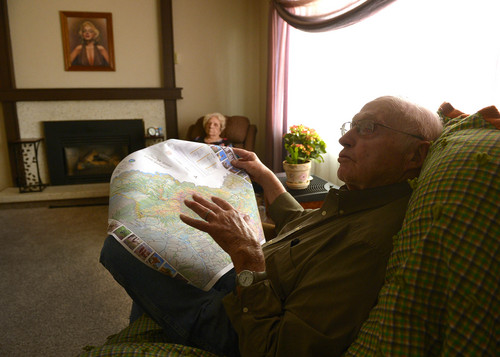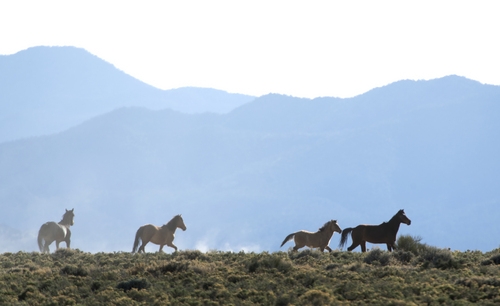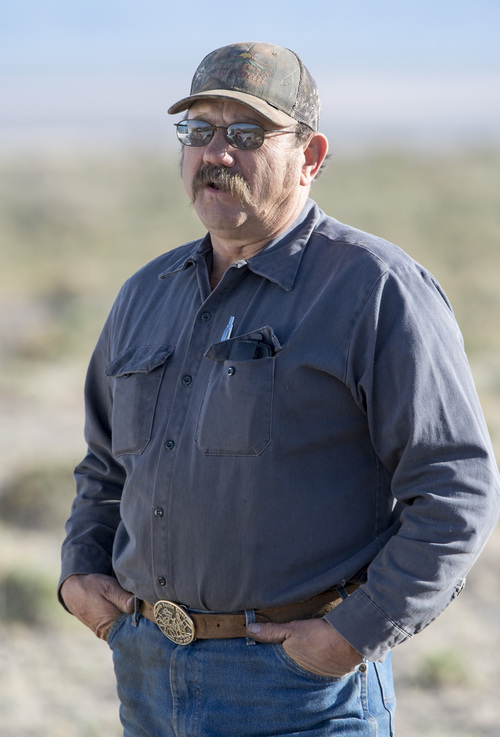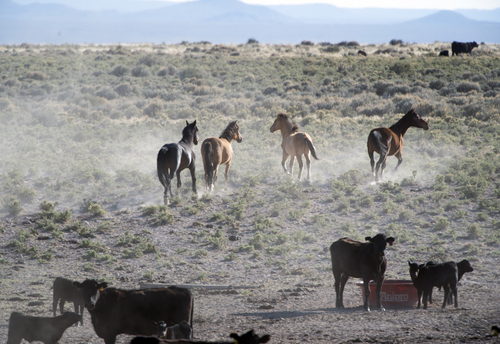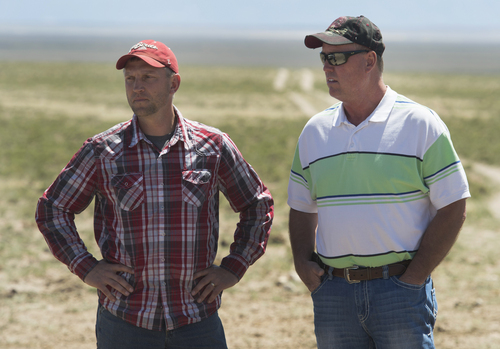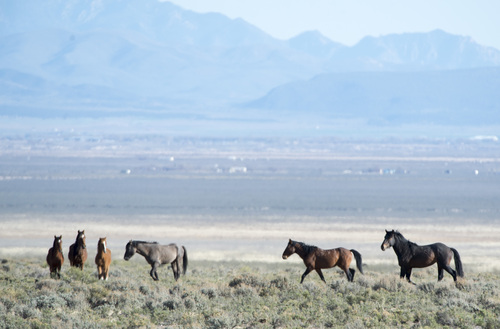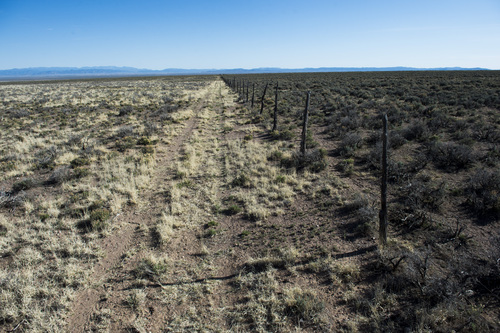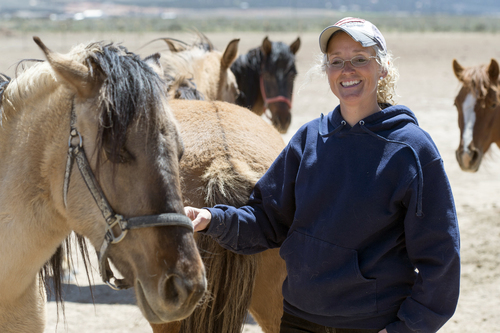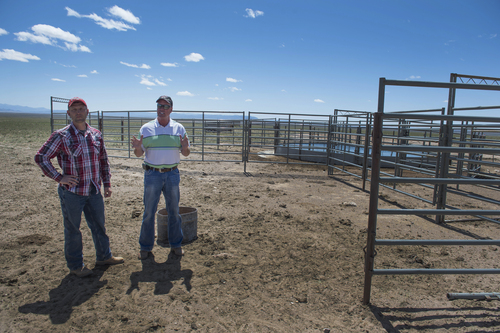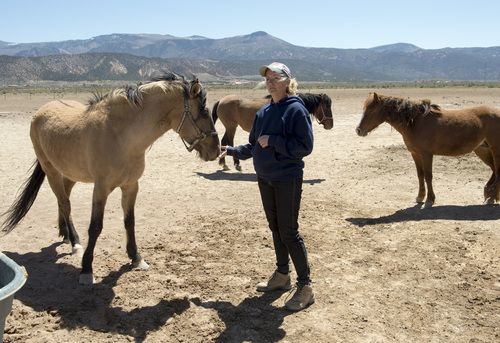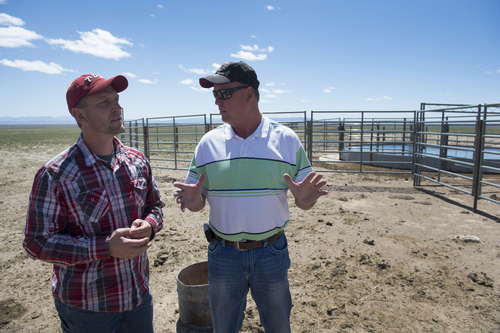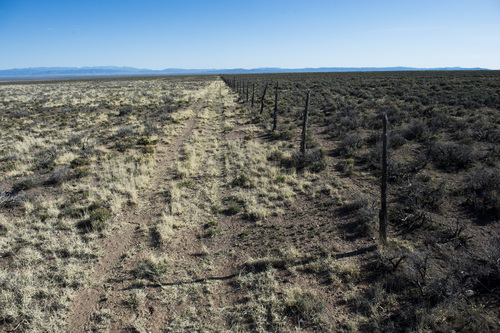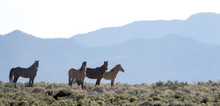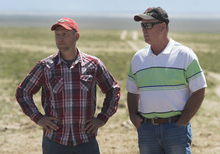This is an archived article that was published on sltrib.com in 2014, and information in the article may be outdated. It is provided only for personal research purposes and may not be reprinted.
Blanding • Recapture Creek wanders below cliff faces that once sheltered hundreds of Americans Indians in homes built from the stones, dirt and plants found in this rugged canyon. Fragments of pottery and less visible burial sites and middens scatter the ground.
Engineering beavers have formed ponds that ducks and other waterfowl troll for delectable invertebrates. A heron takes flight on broad blue wings rather than waiting to see whether visitors are a threat.
And cut through the pinyon and juniper trees is a trail hewn a decade ago by southeastern Utah residents who enjoyed ATV rides through the canyon bottom.
Today, the 7-mile-long canyon is the latest flash point in an ever-simmering conflict between rural Utahns and a federal government that decides what happens on the public lands that locals consider their backyards and, often, their livelihoods.
The Bureau of Land Management closed Recapture Canyon to motorized use in 2007, but this Saturday, the rumble of engines will once again reverberate off its walls if ATV enthusiasts defy BLM warnings that riders could face prosecution. San Juan County Commissioner Phil Lyman, a Blanding accountant, says the planned ride aims to assert county jurisdiction in the face of federal "overreach."
In rural corners around the West, local officials and ranchers are threatening to flout federal authority, often with moral support and legal cover from state leaders. Suction dredge gold miners angry at the Environmental Protection Agency plan acts of civil disobedience on Idaho's Salmon River.
Iron and Beaver county commissions have threatened to round up federally protected wild horses to protect Utah's drought-stricken range. Angst over a possible national monument that could be designated by a lame-duck president with the stroke of a pen is rippling through central and southern Utah.
Fueling the mood: perceived weakness at the BLM, which abandoned a court-ordered cattle roundup in Nevada last month. When armed protesters showed up to support rancher Cliven Bundy, the BLM defused the situation by turning Bundy's cows loose and walking away.
The support seen for Bundy's defiance, even though he was so clearly outside the law, shows "rightly or wrongly, the BLM does not have the faith and goodwill of the general populace," says Mark Ward, policy analyst for the Utah Association of Counties.
Western resentment of federal oversight tends to surge during Democratic administrations, says Bob Keiter, a law professor who directs the University of Utah's Wallace Stegner Center for Land, Resources and the Environment.
The Sagebrush Rebellion arose during the Carter administration. In the 1990s, the Clinton administration faced the Wise Use Movement.
"Underlying the resistance," Keiter says, "is a continuing belief that simmers and comes to the surface periodically, that local control would be preferable to federal control."
—
Disgust on the range • Matt Wood of Cedar City stands by his F-350 Diesel truck sharing memories of awe on Utah's dry southwest desert.
One morning, he awoke to check on his calving cows and saw an otherworldly sight: a rainbow bending and twisting in a fog over the desert, the distant Cedar Breaks beginning to light up under the morning sun.
And two years ago, Wood swears, he watched an eagle swoop and slam into an antelope — and the doe gave chase, rearing up and slamming her hooves into the low-flying eagle.
But this breezy spring day, the descendant of one of Iron County's original Mormon pioneer couples is telling a story laced with disgust.
Because the BLM refuses to control their numbers, Wood and other ranchers say, wild horses are ruining the range and threatening livestock owners' livelihoods.
Wood runs 300 mother cows and their calves (and keeps his 18 bulls separately) on a 7,000-acre ranch that's been in his family nearly 100 years. The cows roam there and on leased state land in the winter.
In the summer, he has grazing permits on roughly 60,000 adjacent BLM acres, just south of the Bible Springs Complex of wild horse herd management areas.
As he drives along a fence separating a parcel of his leased state land and BLM land, the state side has soft green shoots of grass and brush amid last year's dry grass. Ranchers, he contends, move their cattle every 45 to 60 days, resting the land.
The BLM side is mostly trampled dirt with no grass and chewed up brush.
Horses "are there 365 days a year," says Wood. "A horse will chew down and if they don't have enough to eat, they'll eat the crown and kill the plant."
Wood, who has a bachelor's degree in geology and also owns an automotive springs shop in Cedar City, acknowledges grazing fees are low. He pays the BLM $1.35 per month for a cow and her calf — far less than he would pay the state or a private landowner.
But he must sink money into fences, wells, pipe — he has some 50 miles underground — water troughs and ponds on both his ranch and the leased ground. The water he provides on federal land also sustains the wild horses; there are no running streams and they would otherwise have no water for miles.
Rancher Mark Wintch, who runs 1,200 head of cattle in the Wah Wah Valley west of Milford in Beaver County, says he has been able to use his summer BLM range about half the time in the past 20 years because horses eat the grass before his cows arrive.
Last year, the 150 cows he took there in July wandered home in August, "bony and sad."
"It's fun to see one or a band of horses, but when you go out and see the damage they've done, and every year more and more, it's not fun to see," says Wintch, likening it to a more urban scenario: "One squirrel is cute, but when you have 500 in your yard, it's a problem."
—
'There is a bigger pressure' • Before the Wild Free-Roaming Horses and Burros Act of 1971, ranchers managed the horses by rounding them up, keeping an occasional colt, filly or stallion and selling the rest to slaughterhouses for dog meat. Occasionally, a rancher — or a yahoo out for sport — would shoot a horse as they would shoot a pest.
The mustangs, as a result, were disappearing.
The act made them untouchable, and charged the BLM with managing them. The agency determines the number of horses and burros a healthy range can support along with wildlife, livestock and recreationists.
But the BLM admits there are 14,000 more horses than the 26,000 the western ranges can handle. The nearly 50,000 stockpiled in Midwestern pastures consumed 64 percent of the program's $72 million budget last year.
Congress forbids the BLM from euthanizing horses it can't adopt out, and with nowhere to put new captures, the agency planned no roundups this year.
The BLM's wild horses and burros program director, Joan Guilfoyle, last year warned of the program's potential financial collapse and recommended euthanasia if the range continues to decline.
"Since the government took over, the horses have evolved into inbred mongrels that you can't give away," says Wood. "The cheapest, most efficient way to handle the horses is with a .30-06 (rifle). But nobody wants to say that."
In September, the BLM asked Wood and other Utah ranchers to slash their grazing in half so that horses would have more feed on the drought-stricken range. Like others who received similar letters, Wood did not comply.
Instead, the request spurred them to enlist county commissioners in demanding the BLM take action. The ranchers filed a federal lawsuit in Salt Lake City last week, and Iron and Beaver county commissions say they're preparing to round up horses after foaling season if the BLM doesn't do it.
"If the BLM is not willing to manage these horses, there will be a dust bowl on the range in the future," says Wintch, president of the ranchers group suing the agency.
BLM's Utah Director, Juan Palma, says Utah's numbers should be kept in perspective. According to the agency's May 1 estimate, there are more than 4,300 horses roaming in and near the state's 2.5 million acres of horse management areas.
That exceeds the recommended 1,786 horses, but drought is taking a much bigger toll on the range, he says.
"I'm not going to deny there is a problem, but there is a bigger pressure. We are at 40 percent of normal precipitation in southwest Utah," Palma says.
Palma, who last week asked the BLM in Washington to let him round up 946 horses this year, adds that he is limited by the tools and funding Congress makes available.
—
'They...do what they want' • San Juan County residents have lost patience after waiting for eight years for BLM permission to build a 14-mile trail network in Recapture Canyon, says Bob Turri, a retired BLM official and ATV enthusiast.
He contends the canyon's trails have been in use for a century and motorized vehicles were welcomed until the BLM "temporarily" banned ATVs in 2007, after documenting extensive damage to archaeological sites associated with the unauthorized trail construction two years earlier.
But Lyman says the broader target of the protest ride, proposed by locals after a Feb. 27 meeting in nearby Blanding, is federal "jurisdictional creep," which he fears will culminate in President Barack Obama designating a national monument in southeast Utah.
Other locals agree the Recapture dispute is an example of a larger problem.
"Everyone in San Juan County is angry at the federal government, because of years and years of trying to come to the table and negotiate and work with the federal agencies," fumed County Commission Chairman Bruce Adams at a recent commission meeting. "They make their decision and do what they want. It doesn't matter what we propose."
Adams says the commission doesn't officially sanction the ride, but he agrees with the point Lyman is making.
Lyman initially scheduled the ride for May 8 to coincide with the 28th anniversary of federal raids on the homes of prominent citizens suspected of looting ancient graves. The arrest of Earl Shumway in 1986 and the 2009 arrests of other artifact collectors traumatized the community, and Lyman cites these raids, conducted by agents in military gear, as proof of BLM's "hostility" toward Blanding.
"You watch friends hauled out of their homes in shackles and it makes you mad," says Lyman, who moved the ride to Saturday to accommodate more riders.
The BLM has agreed to show Lyman where the trail crosses archeological sites so Saturday's riders can avoid them — incensing some who feel it should not divulge the locations to riders from a town notorious for illegal pot hunting.
Environmentalists' larger concern is that an illegal ATV ride led by an elected official will promote anarchy if the BLM does not pursue possible prosecutions.
"You get a series of these events and it shows a pattern of weakness and this thing will happen all over the place," says Daniel Patterson, a former BLM staffer who now is southwest director for Public Employees for Environmental Responsibility.
—
Managing multiple use • Once, ranchers and miners could negotiate behind closed doors with the BLM or Forest Service over their use of public lands, says Keiter, the Stegner Center director.
Their sons and daughters have had to accept a more transparent — and bureaucratic — relationship.
Beginning with the Wilderness Act of 1964, Keiter says, laws aimed at conservation and environmental protection gave all Americans a say in public lands decisions and led to more wilderness areas and national parks.
The new laws "told the agencies to take multiple-use management seriously," which meant hiring more than former loggers for the Forest Service and geologists for the BLM, Keiter says. Today, the agencies are staffed by biologists, anthropologists, hydrologists and ecologists, and there are many more women.
Utah counties contend getting projects approved now takes too long. Frightened of lawsuits, the BLM and Forest Service move slowly on endangered species decisions, proposed range improvements, timber sales and drilling applications, critics say.
"San Juan County is highly dependent on natural resources for its economy," Turri says. "BLM has things tied down so tight only major companies can get involved. They are only managing for recreation, wildlife and cultural resources; minerals and grazing have taken a back seat."
Responds Palma: "Multiple use doesn't mean we do every activity on every acre of public land."
He listens to county commissions every day, he says, seeking their views as he coordinates projects proposed on the 23 million acres the BLM state office runs.
But the Federal Land Policy and Management Act requires his agency to consider wilderness, water, archaeological sites, endangered species and other resources, he adds.
"This is what the Congress gave us to follow," Palma says, waving his well-thumbed copy of the 1976 law. "I can't decide I'm not going to follow this anymore."
—
'Collaboration has to happen' • Yearning for more control over the use of public lands, Utah lawmakers have passed a spate of laws meant to blunt the authority of federal managers. The most far-reaching demands that title to 30 million federal acres be transferred to the state by the end of this year.
Environmentalists counter that the state lacks the will and resources to properly manage the land.
Reasonable restrictions on overgrazing, ATV use and extractive industries are needed not just to save beautiful landscapes, but to sustain economies, says John Weisheit, a long-time river guide who is the conservation director of Moab-based advocacy group Living Rivers.
"The laws are in place to make sure future generations have the same things past generations have had. We need wilderness because it protects water, air and wildlife," says Weisheit. "Without that river nothing happens. You can't have a civilization without a river."
Amid the bickering, oil and gas developers, environmentalists, recreational businesses and county leaders have been quietly taking field trips together and identifying Utah federal lands they agree should be preserved or developed, whether for energy, timber, livestock or ATV trails.
The "grand bargain" initiative is driven primarily by Utah's Rep. Rob Bishop, a pro-development Republican.
"Public lands is a complex tapestry of success stories, of frustrations," says Ward with the Association of Counties. "There are real critical issues where collaboration has to happen. That won't happen if we're all at each others' throats." —
Live debate: Managing federal lands in Utah
I On May 14 at 7 p.m., The Tribune's Jennifer Napier-Pearce will moderate an Oxford-style debate between three Utahns in support of current federal lands policy and three in opposition.
Once the two sides have debated, the live audience will choose a winner.
The debate is free and open to the public at the Salt Lake City Main Library, 210 E. 400 South. KCPW 88.3/105.3 FM will broadcast it live, and it also will be streamed live at sltrib.com.


